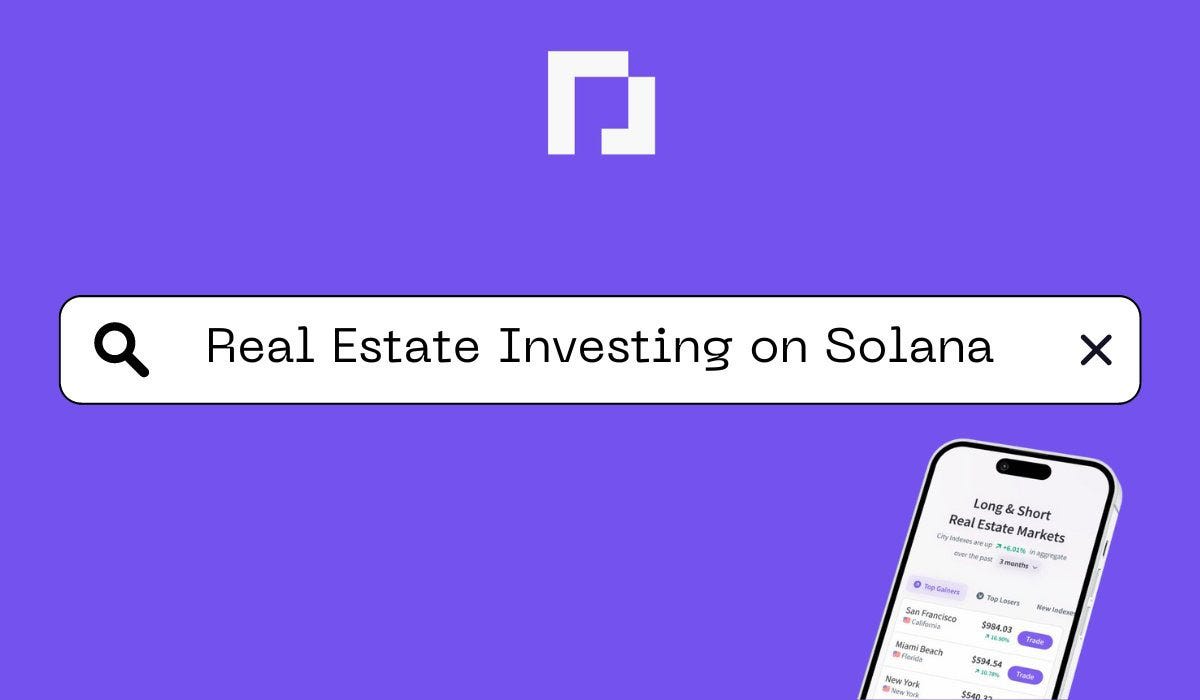Parcl | Trading Real Estate on Solana
Parcl is a decentralized perpetuals AMM designed for real estate synthetics.
Trading is supported by AMM pools that isolate risk. Liquidity providers earn trading fees and pool impact fees.
Pools use price feeds created by Parcl Labs. The Parcl Protocol's dev team operates Pyth oracles to get real estate prices on-chain.
The Parcl Protocol is a DeFi investment platform that allows you to trade the price movements of real estate markets around the world. You can browse real estate markets, gain detailed insights, and have the opportunity to either buy or short real estate markets based on whether you think real world property values will increase or decrease.
🚩 Parcl does not own physical real estate. Parcl does not provide ownership of physical plots of land nor does it provide fractionalized ownership of physical homes.
On Parcl, investors trade the price – median price per sq. ft – of real world properties within markets like Miami, San Francisco, Phoenix.

Parcl City Markets
Every Parcl City is made up of USDC deposited into a Pool by both Traders and Liquidity Providers to put on their respective positions. All fees, rebates, profits and losses are paid and received to and from the liquidity pool.
This means that when fees and losses are reinvested in the pool, there will be more USDC in the liquidity pool after those transactions have been validated. Inversely, rebates and profits are paid from the liquidity pool which results in less USDC in the liquidity pool for all other participants.
Every participant – trader or LP – receives Liquidity tokens when making deposits into the pool at the respective Exchange Rate for that pool. The exchange rate represents the amount of USDC in a liquidity pool for the number of Liquidity Tokens outstanding.
In other words, it represents the individual stakes Traders and LPs have on the USDC within a liquidity pool. Those stakes change with the change in USDC in and out of the liquidity pool due to fees, rebates, profits and losses being paid/received from the liquidity pool.
Liquidity Providers (LPs)
Because participants who are LPs are not directionally interested in the movement in price of a specific city, LPs want the value of their Liquidity Tokens to increase reflected in the Exchange Rate increasing. The Exchange Rate increases and decreases based on fees, rebates, profits and losses – paid/received from the liquidity pool.
In other words, LPs are always interested in more USDC left in the pool per Liquidity Token outstanding. This ultimately means that LPs desire high trading volumes to collect fees and losses left within the liquidity pool.
🚩 When removing liquidity – whether through closing a trading position or closing a LP position – there will be an 8 hour delay until the USDC is available in your wallet.
Traders
Participants focused on trading the price for cities are most interested in the directional price movements. However, Traders ARE ALSO LPs – therefore, traders are also impacted by the exchange rate decreasing significantly from a disproportionate amount of winning trades being paid out from the liquidity pool.
Additionally, there are incentive and disincentive structures – Pool Impact Fee & Funding Fee/Rebate – which impact the economics of opening traders which negatively impact the balance between longs & shorts in any given liquidity pool. These fees & rebates are paid/received from the liquidity pool itself which also impacts the respective exchange rate.
Lastly and most importantly, traders have Profits & Losses for their trading positions. These profits and losses are paid to and from the liquidity pool.
🚩 When removing liquidity – whether through closing a trading position or closing a LP position – there will be an 8 hour delay until the USDC is available in your wallet.